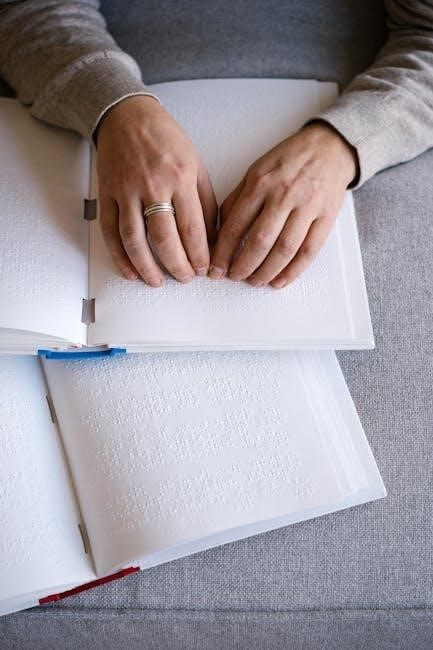The introduction to CPT code for ultrasound guided liver biopsy involves understanding medical procedures and codes used for diagnostic purposes, including liver diseases and conditions, using
specific codes
and guidelines.
Definition of CPT Code 47000
CPT code 47000 refers to a percutaneous biopsy of the liver, which is a diagnostic procedure used to remove a small tissue sample from the liver. This code is used to describe a needle biopsy of the liver, performed to diagnose liver diseases, assess the severity of existing liver conditions, and monitor the effectiveness of ongoing treatments. The code 47000 is specific to the liver and is used in conjunction with other codes to describe the procedure in detail. According to medical guidelines, code 47000 is used to report a liver biopsy performed using a needle, and it may be reported separately in addition to the code for the primary procedure. The code includes the removal of a tissue sample and the examination of the sample to diagnose liver diseases. It is an important code used in medical billing and coding, and its accurate use is essential for proper reimbursement and record-keeping. Medical professionals use this code to describe the procedure and ensure accurate billing.

Understanding the Procedure of Liver Biopsy
Liver biopsy involves removing a tissue sample from the liver using a needle, with
ultrasound guidance
for accurate placement and diagnosis purposes always.
Importance of Ultrasound Guidance in Liver Biopsy
The use of ultrasound guidance in liver biopsy is crucial for ensuring accurate and safe placement of the needle, allowing for real-time visualization of the liver and surrounding tissues. This guidance enables healthcare professionals to avoid damaging nearby structures and vessels, reducing the risk of complications. By utilizing ultrasound, the procedure can be performed with greater precision, resulting in a more reliable diagnosis. The importance of ultrasound guidance lies in its ability to provide clear images of the liver, facilitating the identification of the optimal biopsy site. Furthermore, ultrasound guidance enables healthcare professionals to monitor the procedure in real-time, making adjustments as necessary to ensure a successful outcome. Overall, the incorporation of ultrasound guidance in liver biopsy has significantly improved the efficacy and safety of the procedure, making it a valuable tool in the diagnosis and management of liver diseases.

CPT Codes for Ultrasound Guided Procedures
CPT codes for ultrasound guided procedures include specific codes for various medical services, such as biopsy and aspiration, using
guidance techniques
and equipment.
Specific CPT Code for Ultrasound Guided Liver Biopsy
The specific CPT code for ultrasound guided liver biopsy is crucial for accurate billing and medical record-keeping purposes, and it is essential to understand the codes and their applications.
Using the correct code ensures that medical professionals receive fair compensation for their services and that patients are not overcharged for procedures.
Medical coding guidelines and regulations are constantly evolving, and staying up-to-date on the latest codes and procedures is vital for healthcare providers and medical billing specialists.
By understanding the specific CPT code for ultrasound guided liver biopsy, medical professionals can provide better care and services to their patients, and improve the overall quality of healthcare.
The use of ultrasound guidance for liver biopsy procedures has become increasingly common, and the specific CPT code for this procedure is an essential part of medical coding and billing.
Accurate coding and billing are critical for the financial stability of healthcare providers, and the specific CPT code for ultrasound guided liver biopsy plays a vital role in this process, and must be used correctly.
Medicare Guidelines for Billing Ultrasound Guided Biopsy
Medicare guidelines require accurate coding and billing for ultrasound guided biopsy procedures, using specific and following official guidelines and regulations always.
NCCI Manual Instructions for Reporting FNA and Core Biopsy
The NCCI manual provides instructions for reporting fine needle aspiration (FNA) and core biopsy procedures, including those performed under ultrasound guidance. According to the manual, FNA and core biopsy codes should not be reported together for Medicare patients. The manual also outlines specific guidelines for coding and billing these procedures, including the use of specific codes such as 10005 and 47000. It is essential to follow these guidelines to ensure accurate and compliant billing. The NCCI manual is updated regularly, and it is crucial to stay up-to-date with the latest instructions and guidelines. By following the NCCI manual instructions, healthcare providers can ensure that they are reporting FNA and core biopsy procedures correctly and avoiding potential billing errors. This helps to prevent denied claims and ensures that providers receive fair reimbursement for their services. Proper coding is essential for healthcare providers.

Proper Coding for Ultrasound Guided Liver Biopsy
Proper coding involves using correct
codes
and following guidelines for ultrasound guided liver biopsy procedures and services.
Example of Coding for FNA and Needle Core Biopsy
An example of coding for FNA and needle core biopsy involves using specific codes for each procedure, such as 10005 for FNA and 47000 for needle core biopsy, with ultrasound guidance coded separately using 76942.
The coding example illustrates the importance of accurate coding for medical procedures, including the use of modifiers and guidelines for Medicare patients.
The National Correct Coding Initiative (NCCI) manual provides guidelines for reporting FNA and core biopsy procedures, including the use of specific codes and modifiers to ensure accurate reimbursement.
The coding example also highlights the need for proper documentation and coding to avoid denied claims and ensure compliance with regulatory requirements.
The use of correct codes and guidelines is crucial for healthcare providers to receive accurate reimbursement for medical services, including ultrasound guided liver biopsy procedures;
The example of coding for FNA and needle core biopsy demonstrates the complexity of medical coding and the need for accurate and detailed documentation.
The codes used for FNA and needle core biopsy are specific to the procedure and require careful consideration of guidelines and regulations.
The importance of accurate coding cannot be overstated, as it directly impacts reimbursement and compliance with regulatory requirements.
The example provided illustrates the need for careful attention to detail and adherence to guidelines and regulations when coding for medical procedures, including ultrasound guided liver biopsy.
The use of specific codes and modifiers is essential for accurate reimbursement and compliance with regulatory requirements, and the example provided demonstrates the importance of proper coding practices.
Ultrasound Guidance for Needle Placement Procedures
Ultrasound guidance facilitates precise needle placement for procedures like biopsy and aspiration, using
codes
for accurate reimbursement and compliance;
Aspiration, Injection, and Localization Procedures Under Ultrasound Guidance
Aspiration, injection, and localization procedures are commonly performed under ultrasound guidance to ensure accuracy and safety. These procedures involve the use of ultrasound technology to guide the needle or instrument to the desired location. The use of ultrasound guidance allows for real-time visualization of the procedure, reducing the risk of complications and improving outcomes. Codes are used to report these procedures, including those for ultrasound guidance, aspiration, injection, and localization. Proper coding is essential for accurate reimbursement and compliance. The codes used for these procedures are specific to the type of procedure being performed and the location of the procedure. Ultrasound guidance is an essential component of these procedures, and its use is reflected in the coding. The use of ultrasound guidance has become a standard of care for many procedures, including aspiration, injection, and localization.







